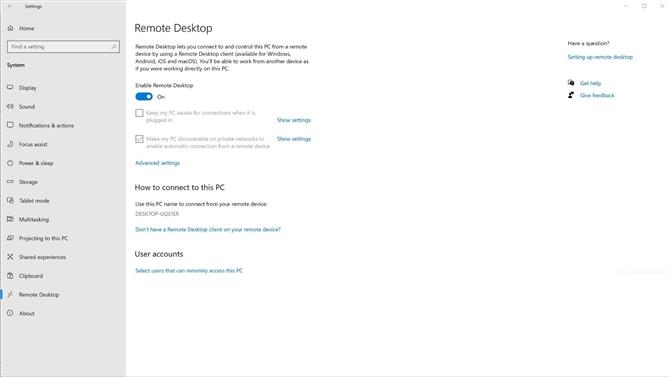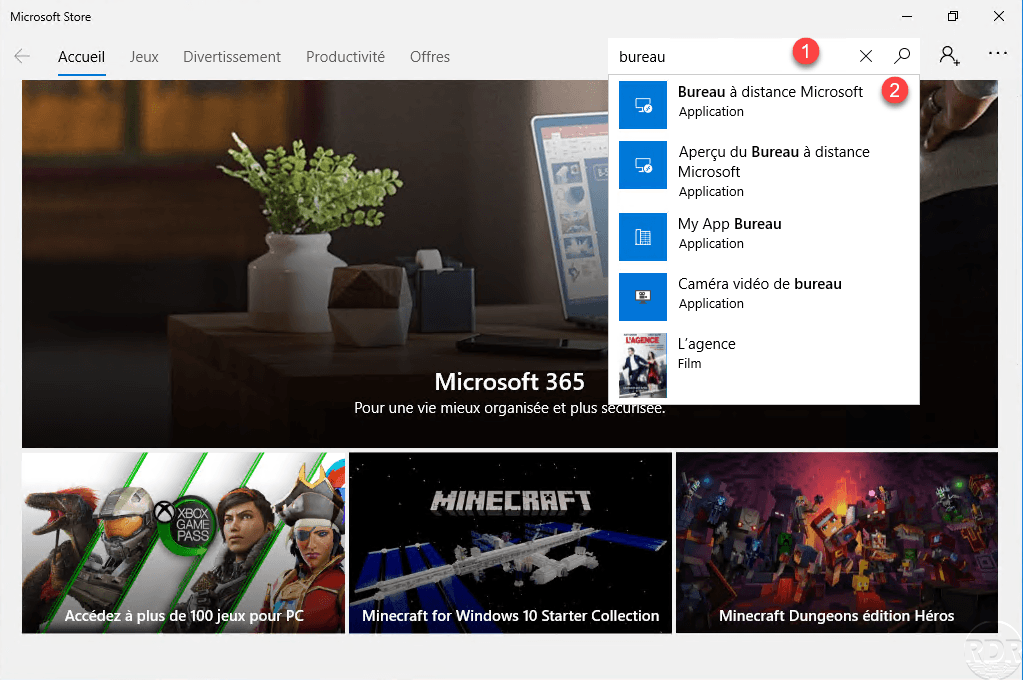- Microsoft Remote Desktop Windows 10 Pro
- Remote Desktop Manager Windows 10
- Microsoft Remote Desktop Windows 10 Home
- Microsoft Remote Desktop Windows 10 Home
- Microsoft Remote Desktop Windows 10 Android
On your local Windows 10 PC: In the search box on the taskbar, type Remote Desktop Connection, and then select Remote Desktop Connection. In Remote Desktop Connection, type the name of the PC you want to connect to (from Step 1), and then select Connect. On your Windows, Android, or iOS device: Open the Remote Desktop app (available for free from Microsoft Store, Google Play, and the Mac App. Step 2: Launch the Remmina Remote Desktop Client. By default, Ubuntu comes with a remote desktop client app that supports the Remote Desktop Protocol (RDP) used by Windows operating systems for remote connections. You can find it in Ubuntu’s Apps list. Get started with the Windows Desktop client.; 7 minutes to read; H; e; d; n; In this article. Applies to: Windows 10, Windows 10 IoT Enterprise, and Windows 7. You can use the Remote Desktop client for Windows Desktop to access Windows apps and desktops remotely from a different Windows device. Microsoft Remote Desktop: Plans and pricing. While Microsoft Remote Desktop is compatible with all versions of Windows 8 and 10, only WIndows Pro and Enterprise users can set up their computers to. While there are many alternatives, Microsoft’s Remote Desktop is a perfectly viable option for accessing other computers, but it has to be properly secured. After recommended security measures are in place, Remote Desktop is a powerful tool for geeks to use and lets you avoid installing third party apps for this type of functionality.
-->
This article describes common issues with the Remote Desktop client and how to fix them.
Remote Desktop client for Windows 7 or Windows 10 stops responding or cannot be opened
Starting with version 1.2.790, you can reset the user data from the About page or using a command.
Use the following command to remove your user data, restore default settings and unsubscribe from all Workspaces.
If you're using an earlier version of the Remote Desktop client, we recommend you uninstall and reinstall the client.
Web client won't open
First, test your internet connection by opening another website in your browser; for example, www.bing.com.
Use nslookup to confirm DNS can resolve the FQDN:

Try connecting with another client, like Remote Desktop client for Windows 7 or Windows 10, and check to see if you can open the web client.
Can't open other websites while connected to the web client
If you can't open other websites while you're connected to the web client, there might be network connection problems or a network outage. We recommend you contact network support.
Nslookup can't resolve the name
Microsoft Remote Desktop Windows 10 Pro
If nslookup can't resolve the name, then there might be network connection problems or a network outage. We recommend you contact network support.
Your client can't connect but other clients on your network can connect
Remote Desktop Manager Windows 10
If your browser starts acting up or stops working while you're using the web client, follow these instructions to troubleshoot it:
- Restart the browser.
- Clear browser cookies. See How to delete cookie files in Internet Explorer.
- Clear browser cache. See clear browser cache for your browser.
- Open browser in Private mode.
Client doesn't show my resources
First, check the Azure Active Directory account you're using. If you've already signed in with a different Azure Active Directory account than the one you want to use for Windows Virtual Desktop, you should either sign out or use a private browser window.
If you're using Windows Virtual Desktop (classic), use the web client link in this article to connect to your resources.
If that doesn't work, make sure your app group is associated with a workspace.
Web client stops responding or disconnects

Try connecting using another browser or client.
Other browsers and clients also malfunction or fail to open
If issues continue even after you've switched browsers, the problem may not be with your browser, but with your network. We recommend you contact network support.
Web client keeps prompting for credentials
If the Web client keeps prompting for credentials, follow these instructions:
- Confirm the web client URL is correct.
- Confirm that the credentials you're using are for the Windows Virtual Desktop environment tied to the URL.
- Clear browser cookies. For more information, see How to delete cookie files in Internet Explorer.
- Clear browser cache. For more information, see Clear browser cache for your browser.
- Open your browser in Private mode.
Windows client blocks Windows Virtual Desktop (classic) feed
If the Windows client feed won't show Windows Virtual Desktop (classic) apps, follow these instructions:
- Check if the Conditional Access policy includes the app IDs associated with Windows Virtual Desktop (classic).
- Check if the Conditional Access policy blocks all access except Windows Virtual Desktop (classic) app IDs. If so, you'll need to add the app ID 9cdead84-a844-4324-93f2-b2e6bb768d07 to the policy to allow the client to discover the feeds.
If you can't find the app ID 9cdead84-a844-4324-93f2-b2e6bb768d07 in the list, you'll need to register the Windows Virtual Desktop resource provider. To register the resource provider:
- Sign in to the Azure portal.
- Go to Subscription, then select your subscription.
- In the menu on the left side of the page, select Resource provider.
- Find and select Microsoft.DesktopVirtualization, then select Re-register.
Next steps
- For an overview on troubleshooting Windows Virtual Desktop and the escalation tracks, see Troubleshooting overview, feedback, and support.
- To troubleshoot issues while creating a Windows Virtual Desktop environment and host pool in a Windows Virtual Desktop environment, see Environment and host pool creation.
- To troubleshoot issues while configuring a virtual machine (VM) in Windows Virtual Desktop, see Session host virtual machine configuration.
- To troubleshoot issues related to the Windows Virtual Desktop agent or session connectivity, see Troubleshoot common Windows Virtual Desktop Agent issues.
- To troubleshoot issues when using PowerShell with Windows Virtual Desktop, see Windows Virtual Desktop PowerShell.
- To go through a troubleshoot tutorial, see Tutorial: Troubleshoot Resource Manager template deployments.
You can access Windows Virtual Desktop resources on devices with Windows 10, Windows 10 IoT Enterprise, and Windows 7 using the Windows Desktop client.
Important
This does not support Window 8 or Windows 8.1.
This only supports Azure Resource Manager objects, to support objects without Azure Resource Manager, see Connect with Windows Desktop (classic) client.
This does not support the RemoteApp and Desktop Connections (RADC) client or the Remote Desktop Connection (MSTSC) client.
Microsoft Remote Desktop Windows 10 Home
Install the Windows Desktop client
Download the client based on your Windows version:
During installation to determine access, select either:
- Install just for you
- Install for all users of this machine (requires admin rights)
To launch the client after installation, use the Start menu and search for Remote Desktop.
Subscribe to a Workspace

To subscribe to a Workspace, choose to either:
- Use a work or school account and have the client discover the resources available for you
- Use the specific URL of the resource
To launch the resource once subscribed, go to the Connection Center and double-click the resource.
Tip
To launch a resource from the Start menu, you can find the folder with the Workspace name or enter the resource name in the search bar.
Use a user account
- Select Subscribe from the main page.
- Sign in with your user account when prompted.
The resources grouped by workspace will appear in the Connection Center.

Note
The Windows client automatically defaults to Windows Virtual Desktop (classic).
However, if the client detects additional Azure Resource Manager resources, it adds them automatically or notifies the user that they're available.
Use a specific URL
Select Subscribe with URL from the main page.
Enter either the Workspace URL or an email address:
- For Workspace URL, use the URL provided by your admin.
Available Resources URL Windows Virtual Desktop (classic) https://rdweb.wvd.microsoft.com/api/feeddiscovery/webfeeddiscovery.aspxWindows Virtual Desktop https://rdweb.wvd.microsoft.com/api/arm/feeddiscoveryWindows Virtual Desktop (US Gov) https://rdweb.wvd.azure.us/api/arm/feeddiscovery- For Email, use your email address.
The client will find the URL associated with your email, provided your admin has enabled email discovery.
Select Next.
Sign in with your user account when prompted.
The resources grouped by workspace will appear in the Connection Center.
Microsoft Remote Desktop Windows 10 Home
Next steps
To learn more about how to use the client, check out Get started with the Windows Desktop client.
Microsoft Remote Desktop Windows 10 Android
If you're an admin interested in learning more about the client's features, check out Windows Desktop client for admins.
